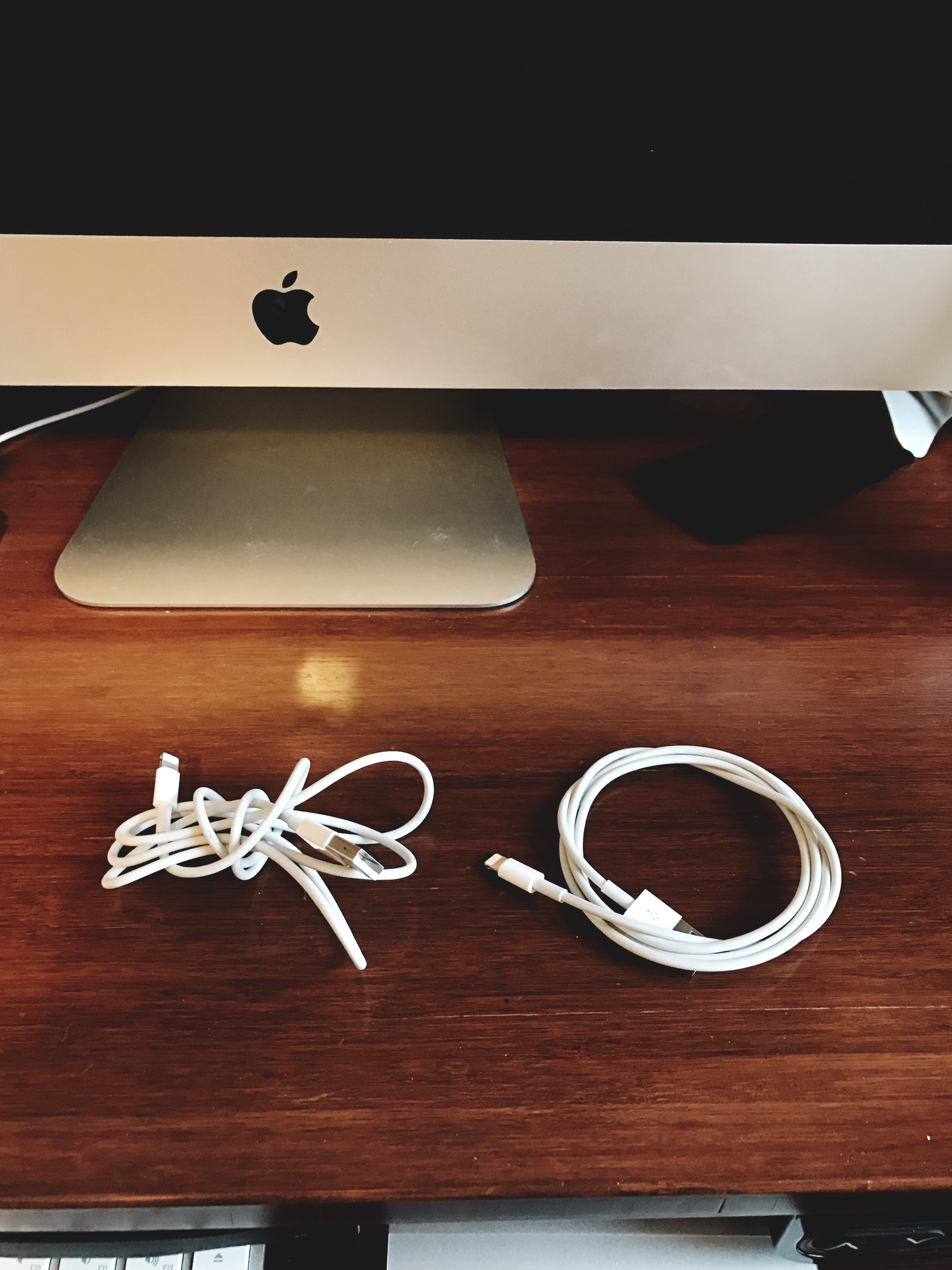As long as I can remember, people have complained to me about the frailty of Apple’s various cables. Lightning cables, the cables on the power bricks. The old 30-pin cables. You name it, people say they are always having to replace them because they fray, short out, etc.
No doubt, the cables Apple makes are far from perfect in this regard. They’ve gotten thicker in recent months, probably as a long-overdue response to this complaint, but time will tell if the new thickness is any help to these unfortunate people who have had to pay to replace fraying cables.
I have to confess, though, I always have to struggle to empathize with people over their cord issues, because in the many years I’ve been using Apple products, I’ve never had a single cord fail on me. Is this extreme luck? I doubt it.
Having borrowed cords from friends over the years for a quick charge, or to plug my phone into my laptop, I’ve noticed a pattern. Many of my friend’s cords look as though they’ve been through a war, whereas just about any of mine look like they were unpacked out of their original boxes yesterday.

Guess which cable is mine?
I won’t speculate why my friends’ cables are so often yellowed, sticky, etc. But I can say with certainty that the way most developers wrap their cables has a great deal to do with the condition they end up in after a few months. I’ve seen all sorts of variations of wrapping the cord around itself, around devices, twisting them into knots, etc. Usually, the ends are completely stressed when they are done wrapping. And then they throw them into a bag that way for several days at a time.
I’m not saying that Apple’s cables shouldn’t be able to withstand a bit more torture than they get from most people, but there is something to be said for being a bit more careful.
And that’s where the “twist” comes in.
I first encountered the twist when I was a young musician. The one aspect of playing an electric instrument that I’ve always hated is dealing with the instrument cable. After a live performance, especially, the cable would be so twisted up in knots, and I’d have only a few minutes to pack up all my equipment and get off the stage for the next act. So I’d wrap the long cable into a circle using my arm, or just shove the cable into a bag any which way, which led to me needing to replace my cord about every six months or so.
Then one day, a sound engineer I was working with taught me the trick. Make sure both ends of the cable are free to move. Then, hold the end of the cable in one hand, and use your second hand to bring a loop of the cable over to the first hand, making a twisting motion as you do so. Allow the free end of the cable to spin freely. Repeat until the entire cable is in nice, even, flat loops.
This literally changed my life. I use this technique with every cord I own, and it works flawlessly. I almost never need to replace instrument cables anymore. I can pack several cables in seconds, and everything stays neat and orderly for the next show.
It works particularly well with Lightning cables and other Apple cables, too, as demonstrated in the following video.
For longer cables, such as the ones I use for playing music, I use a velcro tie to keep the loops together. On shorter cables, I just gently wrap the ends around the loop, creating a simple hook.The best part is not only does this prolong the life of your cables, it makes stowing away the cables into bags and pouches much easier. And it makes keeping the cables separated from each other much easier, too. No more knots.
Learn this trick, and I swear, unless you are pulling the plug out by the cable (which I really hope you aren’t) or you are stressing the cable in some other way during actual use, you should never have another problem with any of Apple’s white cables again.
Unless your cats get to them. I can’t do anything about your cats.